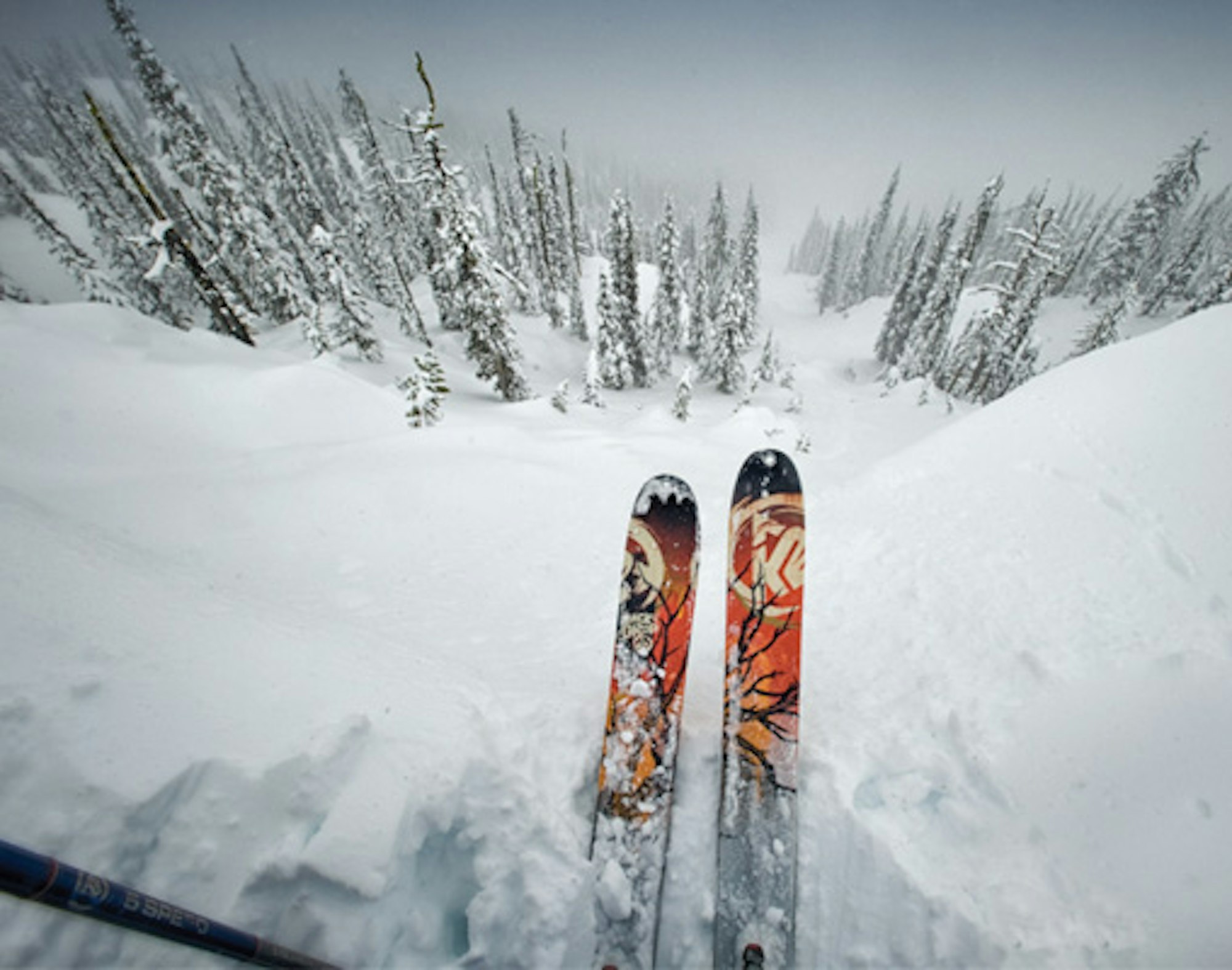You can tell a lot about a ski area by its base lodge. There are plenty built to impress, offering valet parking, chandeliers and four-star dining, but you’ll find fewer of the worn-in, utilitarian variety. The kind marked by cubbies overflowing with kids’ gear, retired guys sharing brown-bag lunches on picnic tables and a fabled bar where live music shakes 200-year-old timbers.
Two and a half hours north of Spokane, WA in the West Kootenay region of the Interior of British Columbia, Canada, Red Mountain has a true ski club feel. In fact, up until the late 1980s, it was just that—a ski area owned by the town and operated by its members. Today, with free parking, sub-$80 lift tickets and empty lift lines, the place has all the makings of a great little ski area. But Red is far from little. With its new expansion of 1,000 acres (including an entire new peak: Grey Mountain), the resort is now bigger than Jackson Hole and sits in the top three percent of North American resorts in terms of skiable acres.
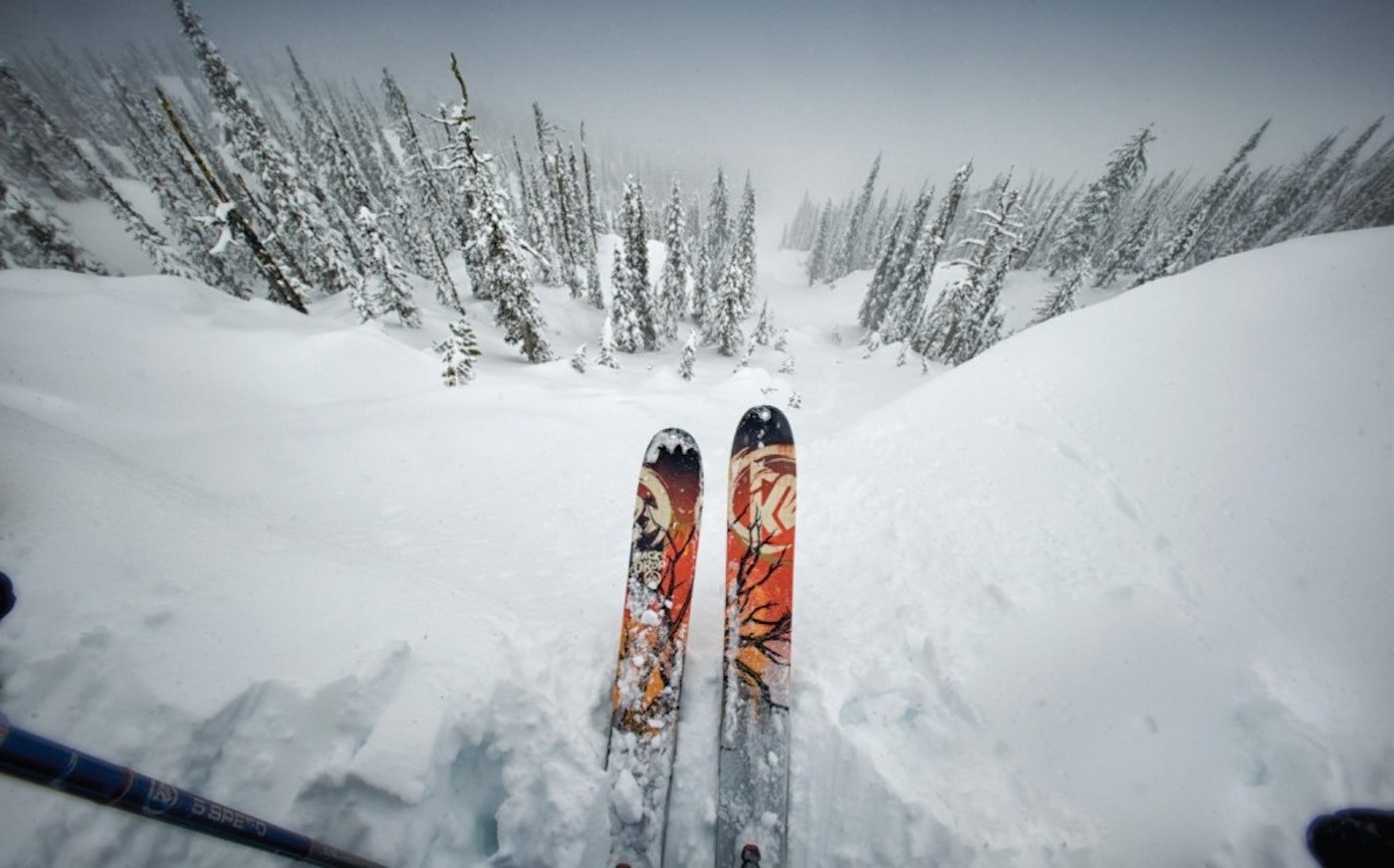
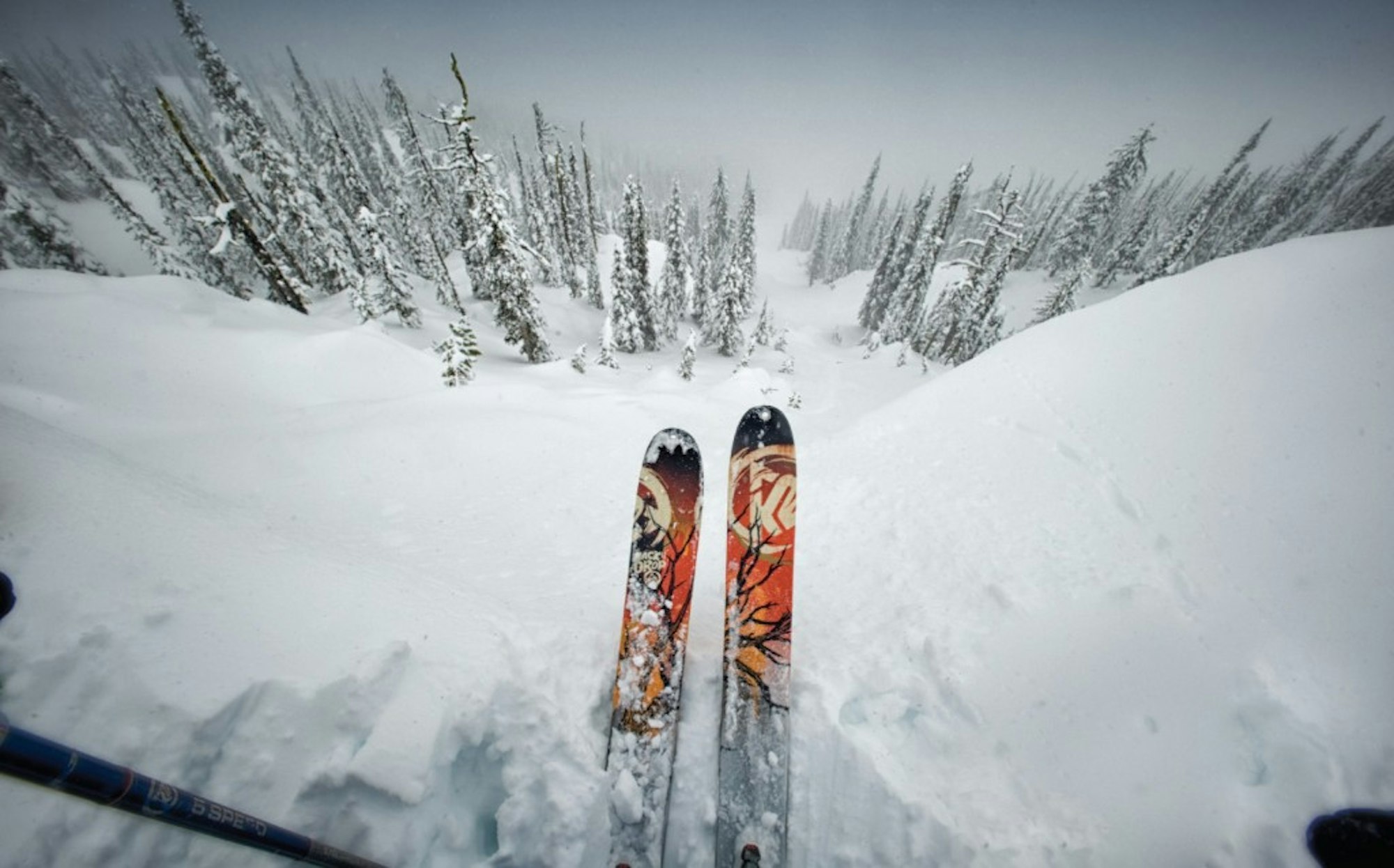
Photos by Dave Heath. Below: Michelle Rudell (Skier)
“It’s a mountain you can ski 360 degrees off one chairlift,” says Dane Tudor, who lives in Rossland, BC, 10 minutes from Red Mountain. “A lot of places you traverse and run into cat tracks. Here, you ski fall line.” Tudor’s skiing style has evolved over the years, as has his favorite line. “When I was younger, I always went off the backside of Granite,” he says. “Now, I hit the shoulders. They’re longer and more gladed. The backside is steeper with terrain that goes from cliffy to mellow, while the frontside offers longer pitches and smoother runs.”
Despite the $50-million upgrade, North America’s third oldest ski resort hasn’t deviated from its authenticity. Just look to its sizable retirement crew—people like Dan Loukras and his gang of bearded guys in their 50s and 60s who meet at the base most every day. Decades ago, “Danimal” read an article about three under-the-radar ski areas and drove west across Canada. His plan was to hit Red Mountain, then Fernie and Silverstar before choosing his favorite, but after one ride up Red’s Motherlode chairlift and a powder filled descent, he traded in his day ticket for a season pass.
I’m riding the Motherlode with Dan on a hard-pack day, but it’s clear we’re on one of the world’s great chairlifts. The slow triple ascends the north face of 6,807-foot Granite Mountain. Interesting lines are visible from flank to flank, but the consistently steep fall-line shot directly beneath the chair looks like the ultimate line on a deep Kootenay powder day. As we creep along, Dan says the chair needs to be slow to let your legs recover after skiing the almost 3,000 feet of vertical below.
Our group skis off the backside of Granite and throws on skins for a quick hike up Grey Mountain. We’re still inbounds and for $10, we could have taken a cat to the top. Though it’s either a cat ride or your own two feet that will get you up this year, at the summit, we see stakes marking the location of a new lift that will make this 1,000 acres of new terrain even easier to lap in 2013-14. Facing the resort, the south side offers intermediate tree skiing, while the north side serves up shorter, steeper shots littered with cliffs and interesting features.
We’re headed one peak farther to the north. We ski off the top of Grey, beyond the boundary, to our next staging area. Less than an hour of switchbacks later, we’re at the wind scoured summit of Mount Kirkup, looking over the expansive Monashee and Selkirk mountain ranges. Our group of six enjoys 2,000 feet of boot deep turns from the summit down to the highway, where Dan’s friend has parked a truck. We’re back at the resort in time for a few more inbounds laps before closing.
Until this season, Red Mountain consisted of two peaks—Granite, offering the majority of the resort’s terrain, and Red, a smaller 1,500-foot peak served by a double chair. Of Red’s 88 named runs, 75 percent aren’t groomed. It’s tree skiing at its finest, and with so many acres, even locals can’t find some of the stashes twice. “We ski so many more acres of this resort than others of similar size,” says vice president of business development and former general manager, Erik Kalacis. “Of our 2,685 acres, there are probably only 85 acres you can’t ski.”
One of Canada’s highest towns, Rossland is built into the surrounding mountains. Colorful, old mining homes line roads that are as steep as San Francisco’s and a lot windier. A three-block drag of the extra-wide Main Street comprises most of the town’s businesses and all of the action happening in this town of roughly 3,500 residents, most of whom live here to ski or mountain bike.
The history around here dates back to the 1890s, when deposits of gold-copper ore were found on the south side of Red Mountain. The gold rush filled Rossland with miners, mostly Scandinavians who brought with them their knowledge and love of skiing. They put up a ski lift in 1947 and founded the Rossland Ski Club, which held the first recorded ski competitions in Canada. In 1968, the Red Mountain Ski Club hosted Canada’s first World Cup and Rossland native Nancy Greene won her second World Cup championship on home turf.
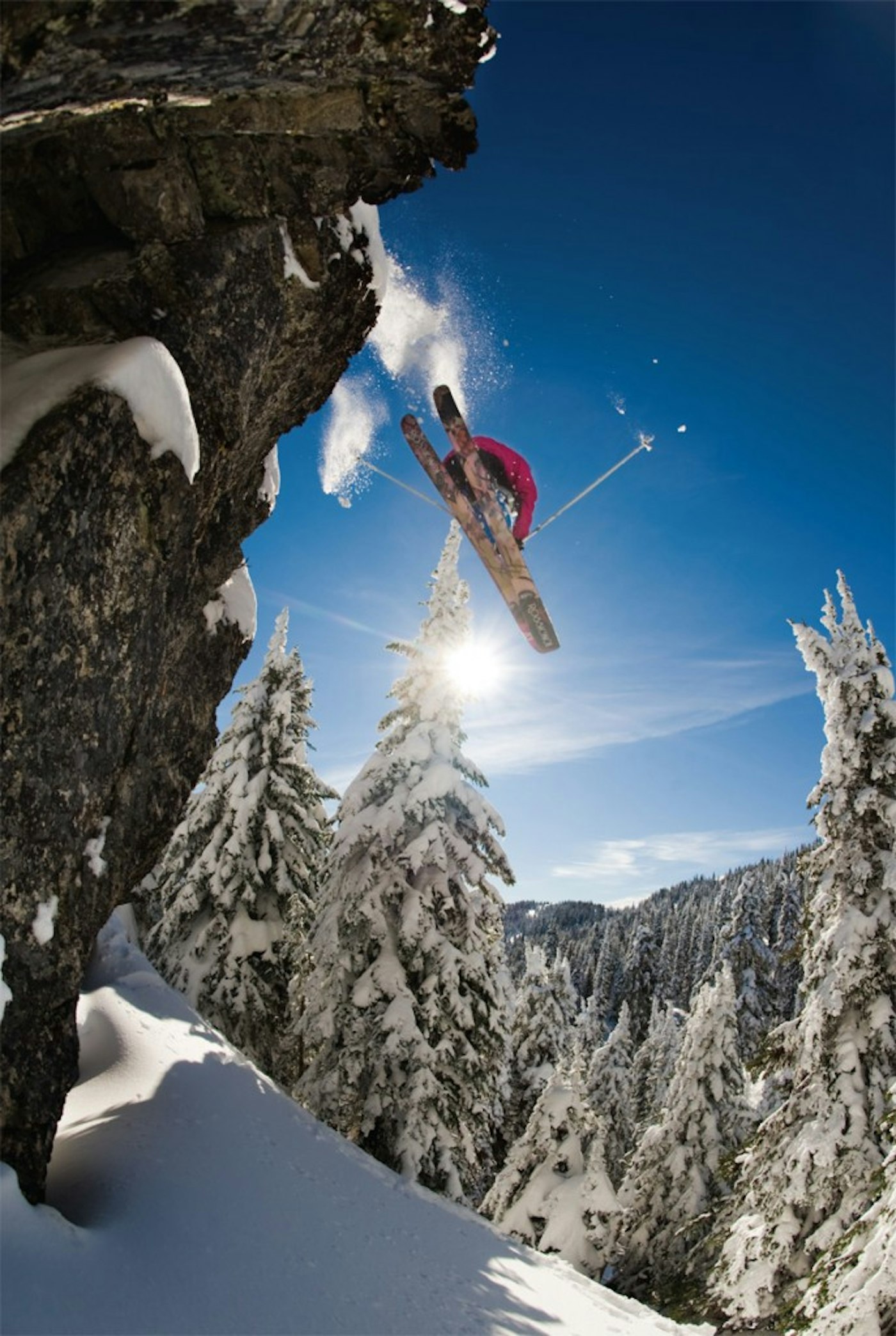
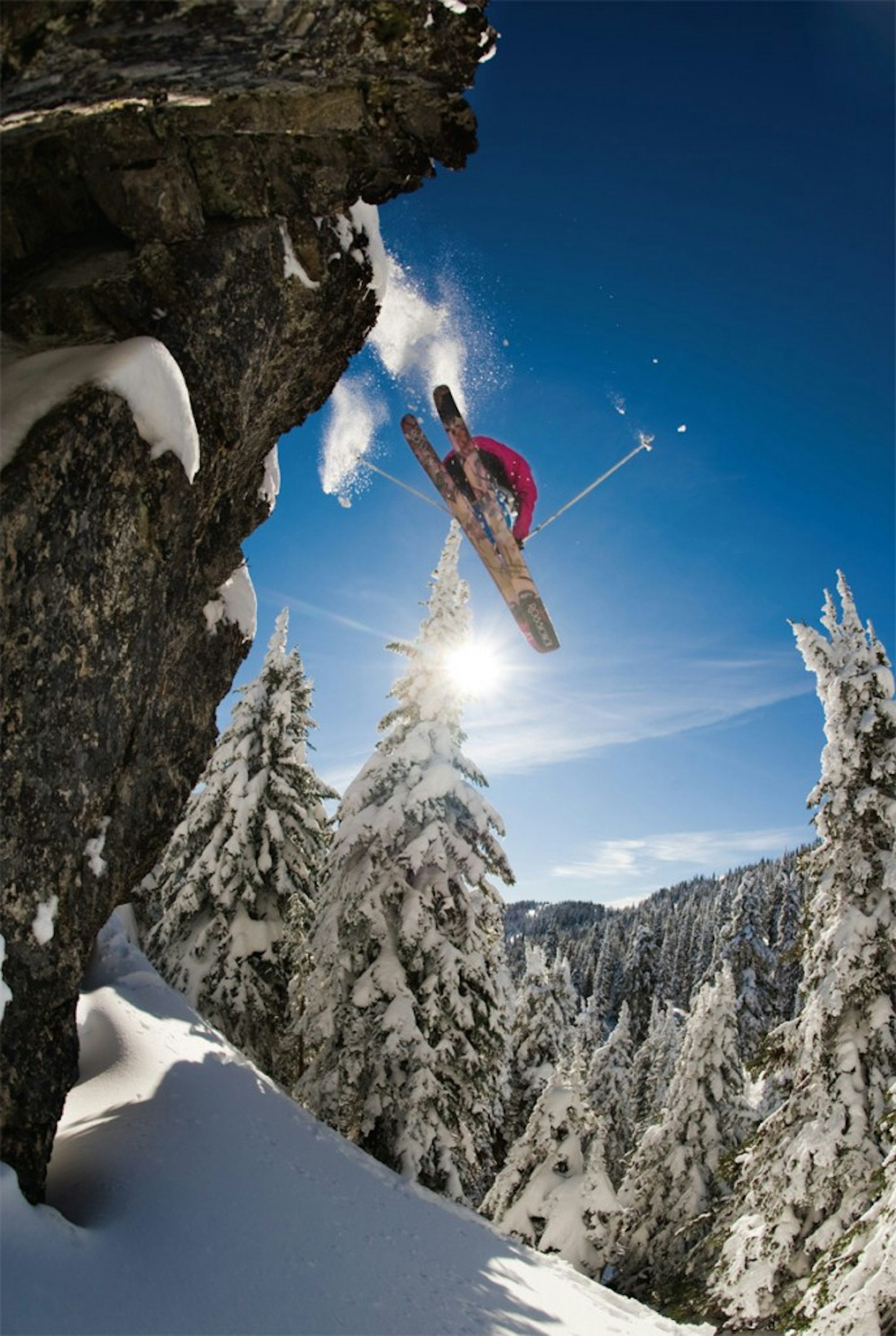
The lift-accessed backcountry skiing at Red is as user friendly as it gets—sub peaks in every direction, accessible aspects or terrain to match any conditions and the perfect adventure whether you have an hour or five. For some more exploring, I’ve met up with fellow visitors Lexi Dupont, Jacqui Edgerly, and Kasha Rigby, and Gauvin leads our female posse to Mount Roberts. It’s an easy 30-minute skin from the resort to Robert’s summit, and we ski right to a lift in Paradise Basin. The site of the Canadian Open Freeskiing Championship, Robert’s 50-degree face is filled with interesting and challenging lines.
Back at the base, it’s time to experience Rafters, the legendary bar that’s won accolades such as “Best Ski Town Bar,” among others. The bar used to be located on the top floor of the lodge, and locals remember when beer trickled through the rafters and into the cafeteria. It has since moved downstairs, but the old timbers remain intact, giving the place a worn-in, welcoming feel that’s hard to find in a resort lodge these days. The place is packed, and before we know it, it’s well past dinnertime. R&B singer Allen Stone takes the stage, filling the room with vocal melodies that make heads turn and embody the very soul of this place.
Note: In addition to the expansion of Grey Mountain, Red is also adding 400 acres of new cat-accessed terrain on White Wolf Ridge. For $10 per ride, you’ll gain access to a mile-wide ridge of open glades and 1,000 feet of vert.
This article originally appeared in the 2013 October issue of Freeskier, Volume 16.2. The October issue is available on newsstands beginning 9/17/13. Freeskier Magazine is also available via the iTunes newsstand.

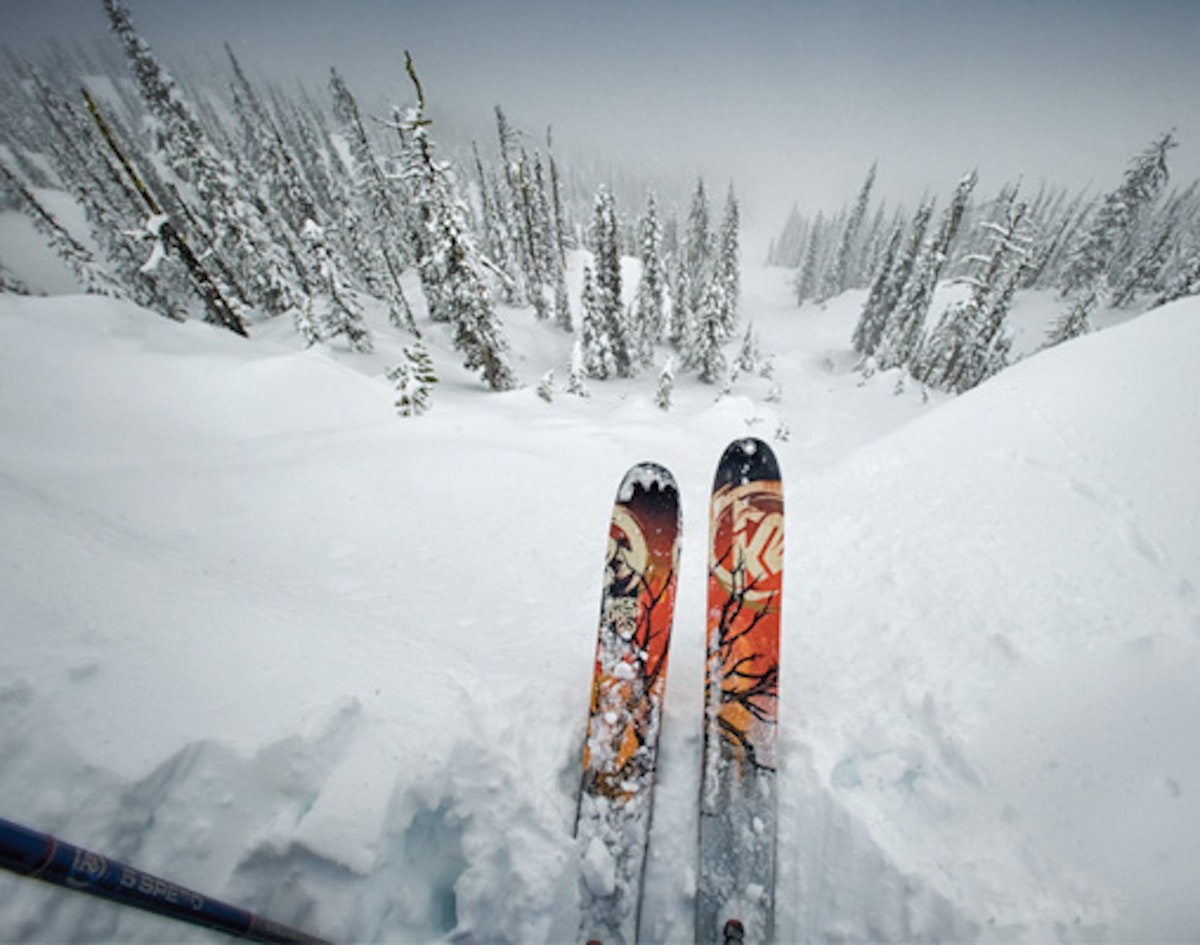


![[GIVEAWAY] Win a Head-to-Toe Ski Setup from IFSA](https://www.datocms-assets.com/163516/1765920344-ifsa.jpg?w=200&h=200&fit=crop)

![[GIVEAWAY] Win a Legendary Ski Trip with Icelantic's Road to the Rocks](https://www.datocms-assets.com/163516/1765233064-r2r26_freeskier_leaderboard1.jpg?auto=format&w=400&h=300&fit=crop&crop=faces,entropy)
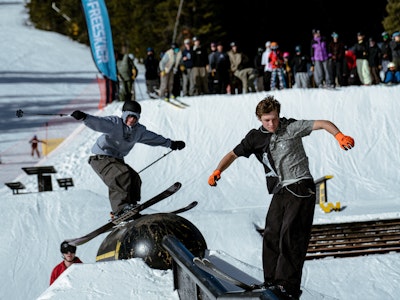




![[GIVEAWAY] Win a Head-to-Toe Ski Setup from IFSA](https://www.datocms-assets.com/163516/1765920344-ifsa.jpg?auto=format&w=400&h=300&fit=crop&crop=faces,entropy)

